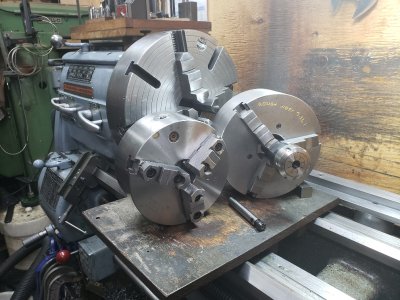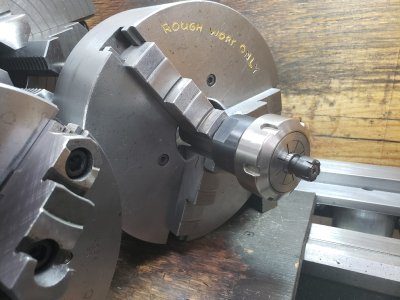GummyMonster
Ken
Afternoon,
I'm stuck in the house with a cold/flu, so I've been reading a lot and watching machining videos until my brain starts hurting.
I have what is probably a totally newbie, knows nothing question that popped into my head.
I ended up with both 3 & 4 jaw chucks for my W210 bench lathe.
Most of what I've seen says that the 4 jaw chuck is far superior than the 3 jaw.
Should I just start using the 4 jaw, and save the 3 jaw for some project down the road? Like making a rotary table or dividing head for my mill?
Or are there times when the 3 jaw is preferable?
Thanks for everyone's advice for all my questions. Truthfully, I haven't even started using my machines. The past 6-8 months have been rough. Too many bumps in the road that have had huge impacts on our family. None of them good, unfortunately for us.
Anyway, that's my concerns.
Thoughts on the 2 chuck types?
Thanks,
Ken
I'm stuck in the house with a cold/flu, so I've been reading a lot and watching machining videos until my brain starts hurting.
I have what is probably a totally newbie, knows nothing question that popped into my head.
I ended up with both 3 & 4 jaw chucks for my W210 bench lathe.
Most of what I've seen says that the 4 jaw chuck is far superior than the 3 jaw.
Should I just start using the 4 jaw, and save the 3 jaw for some project down the road? Like making a rotary table or dividing head for my mill?
Or are there times when the 3 jaw is preferable?
Thanks for everyone's advice for all my questions. Truthfully, I haven't even started using my machines. The past 6-8 months have been rough. Too many bumps in the road that have had huge impacts on our family. None of them good, unfortunately for us.
Anyway, that's my concerns.
Thoughts on the 2 chuck types?
Thanks,
Ken




